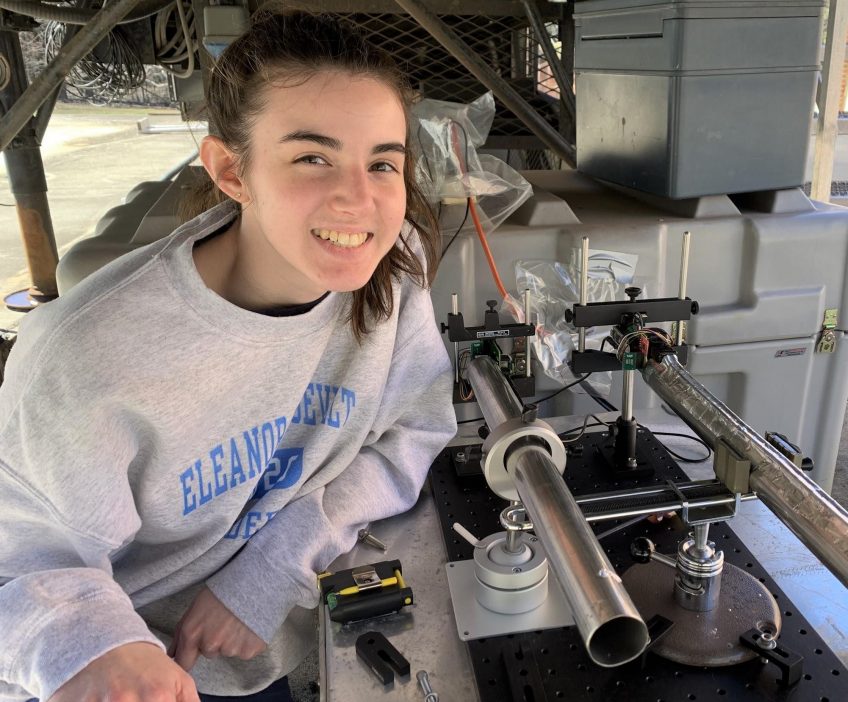Launching weather balloons, programming scientific instruments and having pizza parties. This is a day in the life of a student intern at the Howard University Beltsville Research Campus (HUBC). HUBC is a place where students, professors and research scientists collaborate to study atmospheric science. This year, high school students Sara Harbison and Kofi Boateng had the opportunity to work at this impressive facility. At Eleanor Roosevelt High School, many students participate in the Science & Technology program. One requirement of this rigorous program is to complete an extensive research project during senior year. Ambitious students can choose to work with professional scientists on their projects by attending high school for half the day and working as an intern at a lab or other research facility for the other half. Harbison and Boateng have worked closely at HUBC with their mentor, Dr. David Whiteman, a Greenbelt resident. Harbison remembers Whiteman sitting down with her the first day at her new internship and discussing future projects, coding techniques and opportunities available to her. This was the beginning of a year full of great experiences.
First, Harbison and Boateng participated in a tethersonde launch. After a clear, cloudless night, they met up with Whiteman at HUBC before dawn. As the sun rose, they gathered various atmospheric measurement instruments and created a small package. They donned gloves and filled the fragile weather balloon with pure helium. They then set up a small drill meant to release and reel in the tethered weather balloon and corresponding package at will. When the time was right, they began their tethersonde experiment. After hours of data collection, they reeled in their system one last time. The results were even better than expected. The trio had captured a near perfect temperature inversion. Boateng later compared this data to simulations produced with the NOAA High-Resolution Rapid Refresh model. The students studied the topics of air pollution and particulate matter. Harbison and Boateng installed particulate matter sensors at various locations around HUBC and studied their measurements using programming software. The students learned about a large, professionally operated particulate matter sensor owned by the Maryland Department of the Environment. Harbison later designed and developed a heated inlet to calibrate particulate matter measurements. Throughout their time as interns, the students met with many professional scientists. This included assisting with radiosonde launches as part of the Global Climate Observing System Reference Upper-Air Network (GRUAN) initiative and participating in weekly site meetings. GRUAN, an international program designed to assist atmospheric scientists, is made up of 26 sites around the world. HUBC is the only one of these sites that is both GRUAN certified and classified as an educational institution. At weekly meetings, scientists working at HUBC as well as guest speakers would share their current work. In addition to being a way to learn about new topics and scientific endeavors, these meetings were paired with pizza parties. For Harbison and Boateng, this meant much conversation regarding their college and career goals. After high school, both Harbison and Boateng will attend the University of Maryland in College Park. Their experiences and opportunities working at HUBC, they believe, are only the beginning of their scientific careers. They plan on pursuing degrees in environmental and computer engineering, respectively, drawing on their extraordinary time as high school interns.

